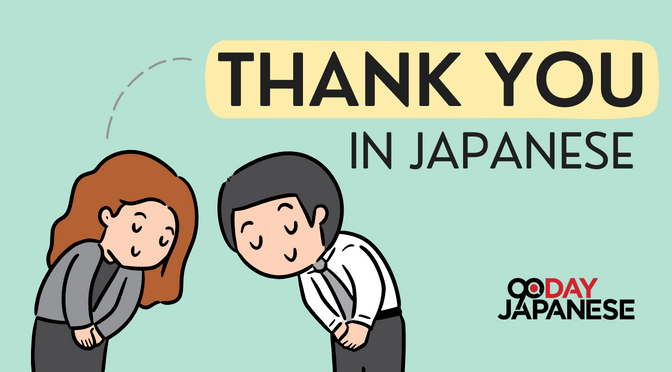Thank You in Japanese: The Art of Expressing Gratitude in Japan
Gratitude is one of the most beautiful expressions of human emotion, and in Japan, it is a deeply rooted cultural value. The Japanese people have a profound appreciation for kindness, respect, and social harmony — and one of the most common ways to express this appreciation is through the simple yet meaningful phrase “thank you.” But saying “thank you” in Japanese is more nuanced than just learning a single word. Depending on the situation, level of formality, and relationship between speakers, there are multiple ways to say “thank you” — each carrying its own tone and significance.
In this article, we will explore how to say thank you in Japanese, the cultural meaning behind these expressions, and how to use them correctly in daily life. Whether you’re visiting Japan, studying the language, or simply curious about Japanese culture, understanding these forms of gratitude will help you connect more deeply with Japanese people and customs.
1. The Basic “Thank You” – Arigatou (ありがとう)
The most common and straightforward way to say thank you in Japanese is “Arigatou” (ありがとう).
This phrase is casual and used in everyday conversations with friends, family, or people you know well. It’s similar to saying “thanks” in English rather than “thank you very much.” It’s warm, simple, and informal.
Example:
-
When your friend passes you the salt at dinner, you can say, “Arigatou!”
-
When a classmate helps you with your homework, “Arigatou!” fits perfectly.
However, Japanese culture places great emphasis on hierarchy and respect. So, while “Arigatou” works among peers, it’s considered too casual in formal or professional contexts. For that, we use more polite variations.
2. The Polite “Thank You” – Arigatou Gozaimasu (ありがとうございます)
To show more respect and politeness, especially toward elders, teachers, or strangers, you should say “Arigatou gozaimasu” (ありがとうございます).
The phrase “gozaimasu” is a polite suffix that elevates the tone of your gratitude. It’s appropriate for most social situations, such as thanking a shop clerk, a colleague, or a teacher.
Example:
-
When leaving a restaurant after a meal: “Arigatou gozaimasu.”
-
When a co-worker helps you with a project: “Arigatou gozaimasu.”
In Japanese society, showing politeness through language is not optional—it’s expected. Using “Arigatou gozaimasu” instead of “Arigatou” in a professional or formal setting demonstrates cultural awareness and respect.
3. The Past Tense “Thank You” – Arigatou Gozaimashita (ありがとうございました)
When expressing gratitude for something that has already been done, the polite form changes slightly to “Arigatou gozaimashita” (ありがとうございました).
The difference between “gozaimasu” and “gozaimashita” lies in the verb tense: “gozaimasu” refers to the present or future, while “gozaimashita” refers to the past.
This form is commonly used to thank someone after an event, favor, or service has been completed.
Examples:
-
After finishing a class, you can tell your teacher: “Arigatou gozaimashita.”
-
When leaving a store where the staff provided good service: “Arigatou gozaimashita.”
It’s a subtle yet important distinction that shows mindfulness and politeness — two key aspects of Japanese communication.
4. A Casual “Thanks!” – Doumo (どうも)
If you want a quick, informal way to say thanks, you can simply say “Doumo” (どうも).
It’s a versatile word that can mean “thanks,” “hi,” or even “hello” depending on the tone and context.
“Doumo” is often used among close friends or when a small favor has been done. It’s casual and friendly but should be avoided in formal or professional settings.
Examples:
-
Your friend lends you a pen: “Doumo!”
-
Someone holds the elevator door open: “Doumo!”
Interestingly, “Doumo” can also be combined with other phrases to increase politeness, such as “Doumo arigatou” (どうもありがとう) or “Doumo arigatou gozaimasu” (どうもありがとうございます), which translates to “Thank you very much.”
5. “Thank You Very Much” – Doumo Arigatou Gozaimasu (どうもありがとうございます)
When you want to express deep gratitude, such as for a big favor or kind gesture, use “Doumo arigatou gozaimasu” (どうもありがとうございます).
This phrase combines the intensifying word “Doumo” (very, truly) with the polite form “Arigatou gozaimasu,” making it a very respectful and heartfelt expression.
Example:
-
When someone helps you during a difficult time: “Doumo arigatou gozaimasu.”
-
When you receive a meaningful gift: “Doumo arigatou gozaimasu.”
This is one of the most commonly used and safest ways to say thank you very much in Japanese — perfect for formal and semi-formal situations alike.
6. The Deepest Gratitude – Hontou ni Arigatou Gozaimasu (本当にありがとうございます)
To convey sincere and profound appreciation, Japanese people often say “Hontou ni arigatou gozaimasu” (本当にありがとうございます), which means “Thank you truly” or “Thank you from the bottom of my heart.”
“Hontou ni” translates to “really” or “truly,” adding emotional depth to the expression. It’s often used when you want to show heartfelt sincerity — for example, when someone helps you through a tough situation or gives you extraordinary kindness.
Example:
-
After a friend supports you during an illness: “Hontou ni arigatou gozaimasu.”
-
When expressing gratitude in a speech: “Hontou ni arigatou gozaimashita.”
This phrase goes beyond politeness — it carries genuine emotion and is often used in emotional or touching moments.
7. Casual and Cute Ways: Sankyuu (サンキュー)
Japanese pop culture has also embraced a loanword from English: “Sankyuu” (サンキュー) — a phonetic version of “Thank you.”
This slangy and playful expression is popular among young people or in casual settings. It’s lighthearted and fun, but not appropriate for serious or formal situations.
Examples:
-
Texting a friend after receiving a favor: “Sankyuu!”
-
Saying thanks in a relaxed, friendly conversation.
“Sankyuu” is common in casual spoken Japanese, much like saying “Thanks!” instead of “Thank you very much!” in English.
8. Expressing Thanks Through Actions
In Japan, actions often speak louder than words. Verbal expressions of gratitude are important, but nonverbal gestures also play a huge role.
a. Bowing (お辞儀, Ojigi)
Bowing is a universal sign of respect in Japan. When saying “thank you,” it’s common to bow slightly, depending on the situation:
-
Small bow (15 degrees): For casual thanks among friends.
-
Medium bow (30 degrees): For formal or professional gratitude.
-
Deep bow (45+ degrees): For very deep or apologetic thanks.
b. Giving Gifts
Another way to express gratitude is through gift-giving. Japanese people often give small presents called “Orei” (お礼) to say thank you for help or kindness. It might be sweets, tea, or a small souvenir. The gesture shows appreciation beyond words.
c. Written Notes
Thank-you notes, known as “Reijou” (礼状), are also a common way to express gratitude formally. Writing a letter shows thoughtfulness and respect, particularly after receiving help, hospitality, or gifts.
9. Cultural Insights: Why Gratitude Matters in Japan
Gratitude is deeply woven into the fabric of Japanese society. It reflects the values of respect (敬意, keii), humility (謙遜, kenson), and harmony (和, wa).
In Japan, every act of kindness — no matter how small — is acknowledged and appreciated. This emphasis on thankfulness fosters social harmony and mutual respect. Expressing gratitude isn’t just about manners; it’s a reflection of one’s awareness of others’ efforts and consideration.
Furthermore, Japanese people often say thank you even when apologizing. For example, after causing someone trouble, one might say “Sumimasen, arigatou gozaimashita” (I’m sorry, thank you), blending apology and appreciation — a uniquely Japanese combination that values emotional balance.
10. Common Phrases Related to “Thank You”
Here are a few related expressions that expand your ability to express gratitude naturally:
| Japanese Phrase | English Meaning | Usage |
|---|---|---|
| ありがとう (Arigatou) | Thanks | Casual |
| ありがとうございます (Arigatou gozaimasu) | Thank you (polite) | Formal |
| ありがとうございました (Arigatou gozaimashita) | Thank you (past tense) | After receiving help |
| どうも (Doumo) | Thanks | Very casual |
| どうもありがとう (Doumo arigatou) | Thank you very much | Polite |
| 本当にありがとうございます (Hontou ni arigatou gozaimasu) | Thank you truly | Deep gratitude |
| サンキュー (Sankyuu) | Thanks (slang) | Casual, friendly |
| 感謝します (Kansha shimasu) | I appreciate it | Very formal |
| お世話になります (Osewa ni narimasu) | Thank you for your support | Business/formal |
11. Saying “Thank You” in Business and Formal Settings
In the professional world, showing proper gratitude is essential. Japanese business etiquette values humility and politeness, so the way you thank colleagues, clients, or superiors can make a lasting impression.
Common phrases include:
-
“Osewa ni natte orimasu” (お世話になっております) – “Thank you for your continued support.”
Often used in emails or business conversations. -
“Itsumo arigatou gozaimasu” (いつもありがとうございます) – “Thank you always.”
A polite way to acknowledge ongoing assistance. -
“Kansha itashimasu” (感謝いたします) – “I am deeply grateful.”
Extremely formal and often used in written correspondence or speeches.
12. Conclusion: Gratitude as a Way of Life
Saying thank you in Japanese is more than a linguistic act — it’s a window into the nation’s soul. The variety of expressions, from a simple “Arigatou” to a heartfelt “Hontou ni arigatou gozaimashita,” reflects Japan’s deep-rooted values of respect, mindfulness, and appreciation.
By learning how to say thank you in Japanese — and understanding when and how to use each form — you’re not just learning a phrase; you’re embracing a key part of Japanese culture. Whether you’re thanking a friend for a small favor or a mentor for their guidance, expressing gratitude sincerely will always be appreciated.
So next time someone helps you in Japan, smile gently, bow slightly, and say from your heart:
“Arigatou gozaimasu.”
It’s a small phrase, but it carries the power to build bridges, show respect, and spread kindness — values that transcend language and culture alike.














Post Comment